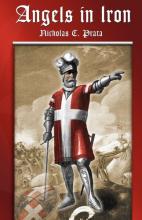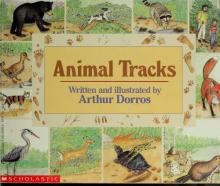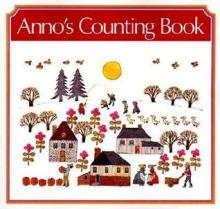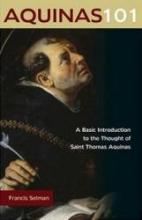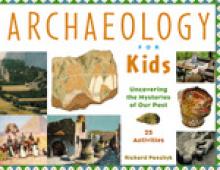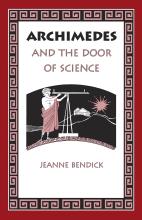No name
Angels in Iron
Angels in Iron is the absorbing tale of the siege of Malta in 1564 between the Knights of St. John of the Hospital (a military religious order) and Suleiman's forces. Suleiman, the most famous sultan of the Turkish Ottoman Empire (who has at this point significantly expanded his empire) has grand plans to conquer the world – and that includes Malta, the new home of the Knights of St. John of the Hospital. The Grand Master of this order witnessed their surrender at Rhodes (their former home) when he was a young knight. Now he is determined to hold on to Malta to the bitter end. Will he succeed in defeating the Turks against incredible odds or will his stubborn pride be the ruin of his Order and cause the loss of many lives?
Prata brings this fascinating tale to life by giving the characters real personalities. They are not mere pawns used to further the plot of the story. Interesting subplots abound. Will the feuding Florentines, Di Corso and Rembaldi, succeed in killing one another before the enemy has a chance or will the grace of God intervene?
Because of a few "choice" words, very minor sexual references (nothing coarse or inappropriate), and extreme violence at times (bodies are getting hacked to pieces), this novel would be more appropriate for a mature high school student than younger children. While the violence is definitely graphic at times, especially in the heat of battle ("The decapitated body stumbled down the hill, neck spewing blood...") since war is hell, it is most realistically portrayed.
Why read a story of such blood and gore? The overwhelming theme is courage, honor, and the Catholic faith. The knights know what the loss of this island will mean. They are willing to die for their faith. There are also many touching moments regarding their Faith. Even though they are in the midst of war, the knights celebrate the feast of Corpus Christi. A conversation takes place between a squire from Germany who wants to take up arms in defense of the Faith and a knight from Italy who advises, "All in good time, little brother. Youth must learn that service is more than death. We must strive to live for The Word before we can die for it."
This book is a real page-turner: Will the knights be able to hold on to the forts in the midst of wave after wave of bombardments and attacks? What really happened at the siege in Malta? Who is going to win the battle of wits and psychological stamina? And ultimately, will the knights be able to fearlessly defend Catholic Europe from the invasion of the scourge of Islam? Read Angels in Iron to find out.
Angus and the Ducks
Various editions available
Animal Tracks
One of the things that fascinates me most about Wisconsin winters (I grew up in California) are the animal tracks clearly visible in the snow. It leaves a temporary record of what was visiting while you weren't looking – what a fascinating thing for homeschoolers to look into. Animal Tracks will make a nice resource for younger students to study local wildlife. This is an illustrated narrative of animal life with a little guessing game on each page based on the tracks left by each animal. The book also contains four pages of identified tracks (including humans) and instructions for "preserving" the tracks with plaster of paris or by tracing. An excellent way to spark children's interest in nature.
Animals of God - Three Catholic stories for children
This audio cassette tells the stories of three different animals who played roles in the lives of the Saints. They are told from the animals' point of view and are appropriate for small children. Similar to other Regina Martyrum audio dramas, they are performed with a full cast of voices and appropriate music and sound effects. I especially like the first story which helps to explain the Catholic belief about the Eucharist and the story of a miracle and a conversion involving St. Anthony of Padua and a donkey named Joshua.
Anno's Counting Book
This is a charming Counting Book with a colorful two page spread for each number from zero through twelve. The pictures show the beginnings of a town. For zero, you see a snowy field with a river running through it. The next page has one house built, one snowman, one person skiing, one pine tree, one crow, one dog, etc. Each month another building is added as more people come to the town. Young children, who often enjoy small details in pictures, can find how many things on each page can be counted up to the same number. Some of the details are quite creative, such as the clock on the church showing the appropriate time for the particular page.
AntWorks Ant Habitat
AntWorks was one of the highlights of our summer natural history studies! This simple kit became a quirky centerpiece on our dinner table, engaging the entire family from the 18-month-old who insists that they are "Nants" to a 40-something daddy. AntWorks comes as a thick-walled plastic home with a stable base; this became important as the little ones spent time watching the ants. We have tried the sand-filled ant farms with dismal spills that freed too many of the inhabitants. The AntWorks home is filled with a blue gel-like substance that provides both nourishment and liquid to the ants. Accompanying literature explains that this gel was developed by NASA for experiments carried out on the Space Shuttle. One of the nicest features is that this gel is translucent, allowing observers to see completely through the tunnels. An optional illuminator is a nice addition which makes an interesting night light, but we thought that it wasn't necessary.
Ants are not included with the kit. You can either catch your own or mail in the enclosed coupon. We opted for the mail-order ants, and that boosted interest in the project for our little ones who love to receive mail. Once the ants are added to their home, the only maintenance that is needed is opening the top for a few seconds a week to allow fresh air to enter. Occasionally you will need to remove a dead ant, but our industrious insects buried their fallen comrades deep in the gel in sealed chambers. It was incredible to observe! This kit, combined with a few books from the library and a couple of diagrams and coloring pages downloaded from the Internet, provided a wonderful investigation into the life of ants for our elementary school-aged students.
Science Kit, Dimensions: 6.5"L x 5.5"W x 1.25"D
Aquinas 101
Archaeology for Kids
Archimedes and the Door of Science
Archimedes, the reknowned ancient Greek Scientist and Mathematician, had an enormous impact on all science and math since his time. This is his story, simply and even humorously told. The reader is introduced to many important concepts discovered and used by Archimedes including the lever, the pulley and his famous discoveries involving water displacement. (Numerous black and white drawings aid immensely in understanding these concepts). I love books which take concepts that have been made over-complex by modern textbooks and show how they are simple enough to be understood by children. Particularly interesting is the chapter entitled "The War Machines of Archimedes" which relates the story of his defense of Sicily by the use of Science: machines which hurled stones at the enemy and carefully designed mirrors which reflected sunlight on the enemy ships so intensely that they caught fire.
Homeschoolers will appreciate Laura Berquist's helpful hints (in the introduction) for incorporating this book into your own curriculum. Keep in mind that this isn't just a Science book – it's an appropriate addition to the study of Ancient Greece and a Math Supplement as well. The complete index is useful for referring to particular topics

